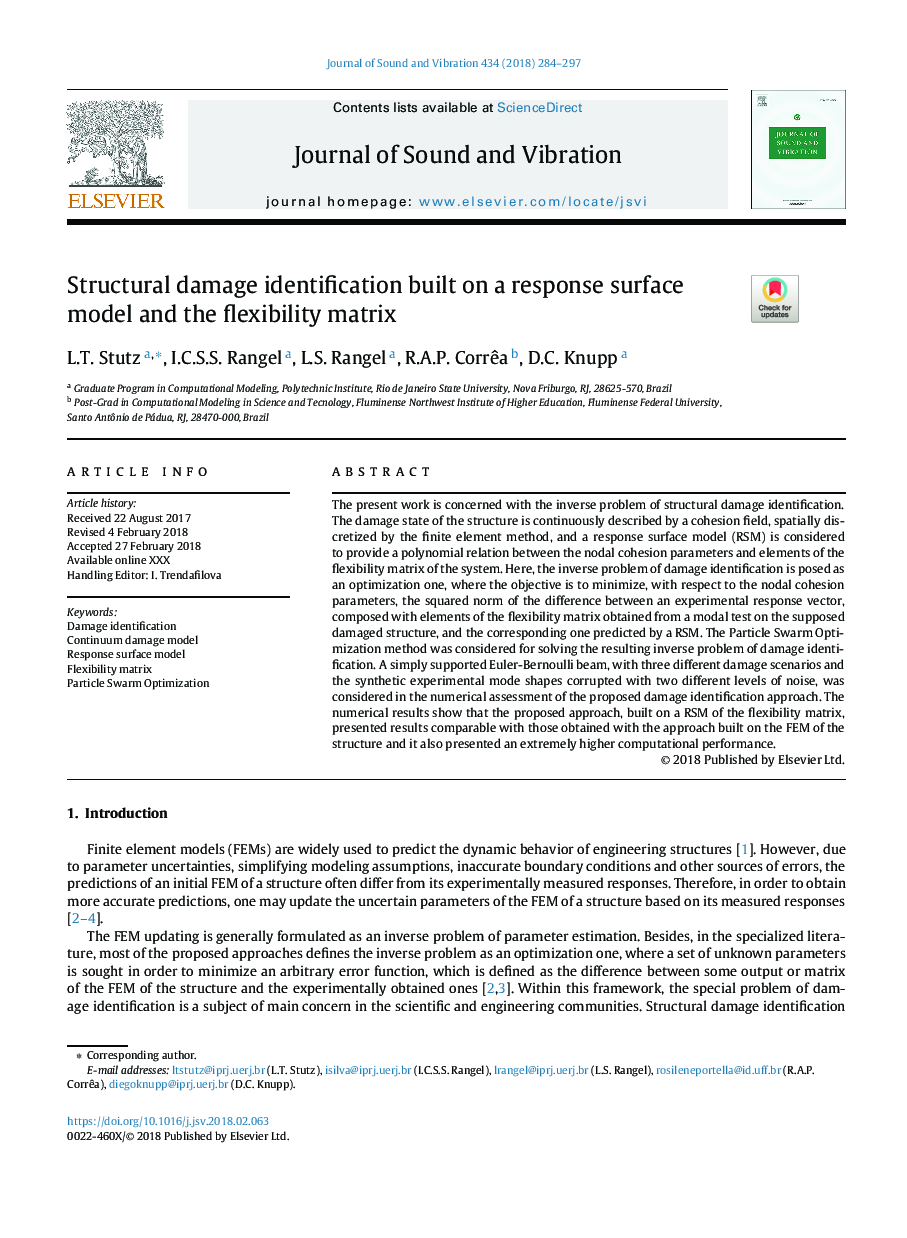| Article ID | Journal | Published Year | Pages | File Type |
|---|---|---|---|---|
| 6752546 | Journal of Sound and Vibration | 2018 | 14 Pages |
Abstract
The present work is concerned with the inverse problem of structural damage identification. The damage state of the structure is continuously described by a cohesion field, spatially discretized by the finite element method, and a response surface model (RSM) is considered to provide a polynomial relation between the nodal cohesion parameters and elements of the flexibility matrix of the system. Here, the inverse problem of damage identification is posed as an optimization one, where the objective is to minimize, with respect to the nodal cohesion parameters, the squared norm of the difference between an experimental response vector, composed with elements of the flexibility matrix obtained from a modal test on the supposed damaged structure, and the corresponding one predicted by a RSM. The Particle Swarm Optimization method was considered for solving the resulting inverse problem of damage identification. A simply supported Euler-Bernoulli beam, with three different damage scenarios and the synthetic experimental mode shapes corrupted with two different levels of noise, was considered in the numerical assessment of the proposed damage identification approach. The numerical results show that the proposed approach, built on a RSM of the flexibility matrix, presented results comparable with those obtained with the approach built on the FEM of the structure and it also presented an extremely higher computational performance.
Keywords
Related Topics
Physical Sciences and Engineering
Engineering
Civil and Structural Engineering
Authors
L.T. Stutz, I.C.S.S. Rangel, L.S. Rangel, R.A.P. Corrêa, D.C. Knupp,
